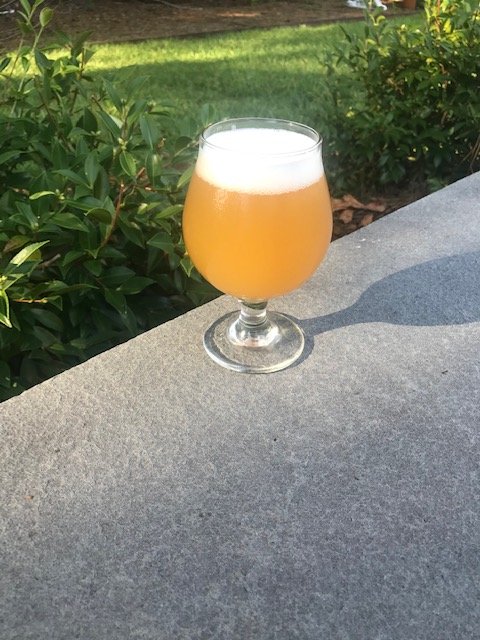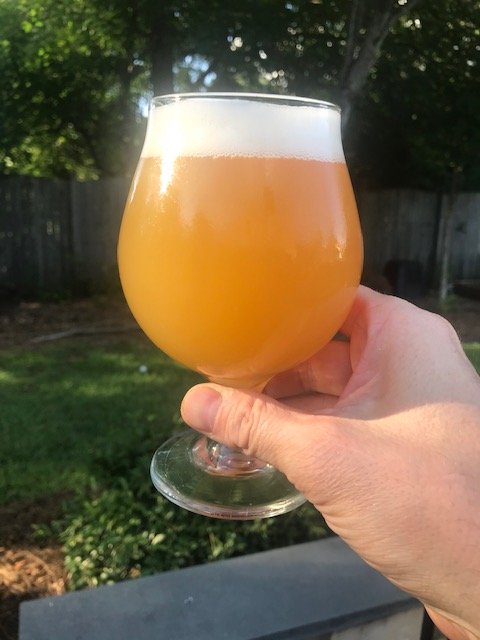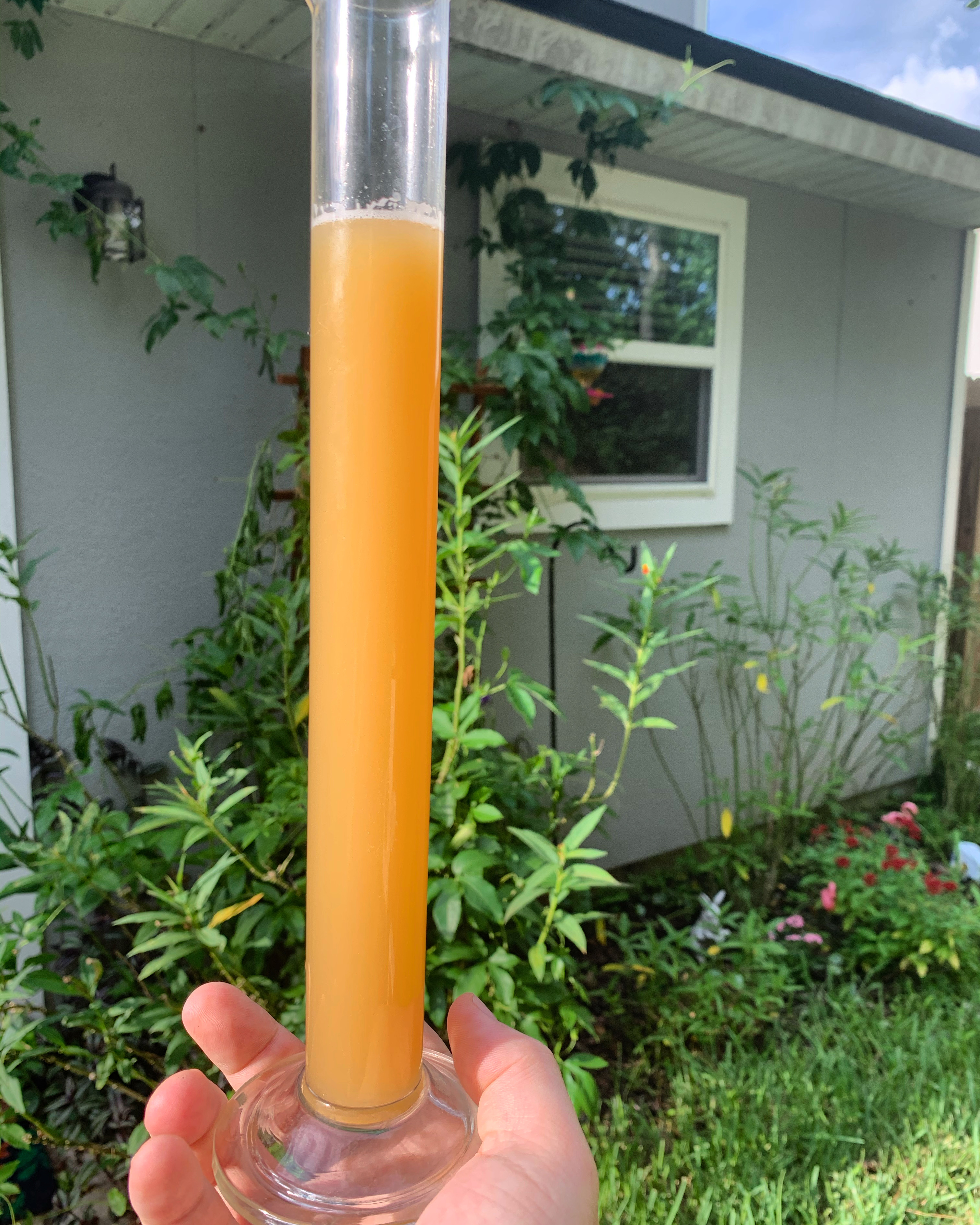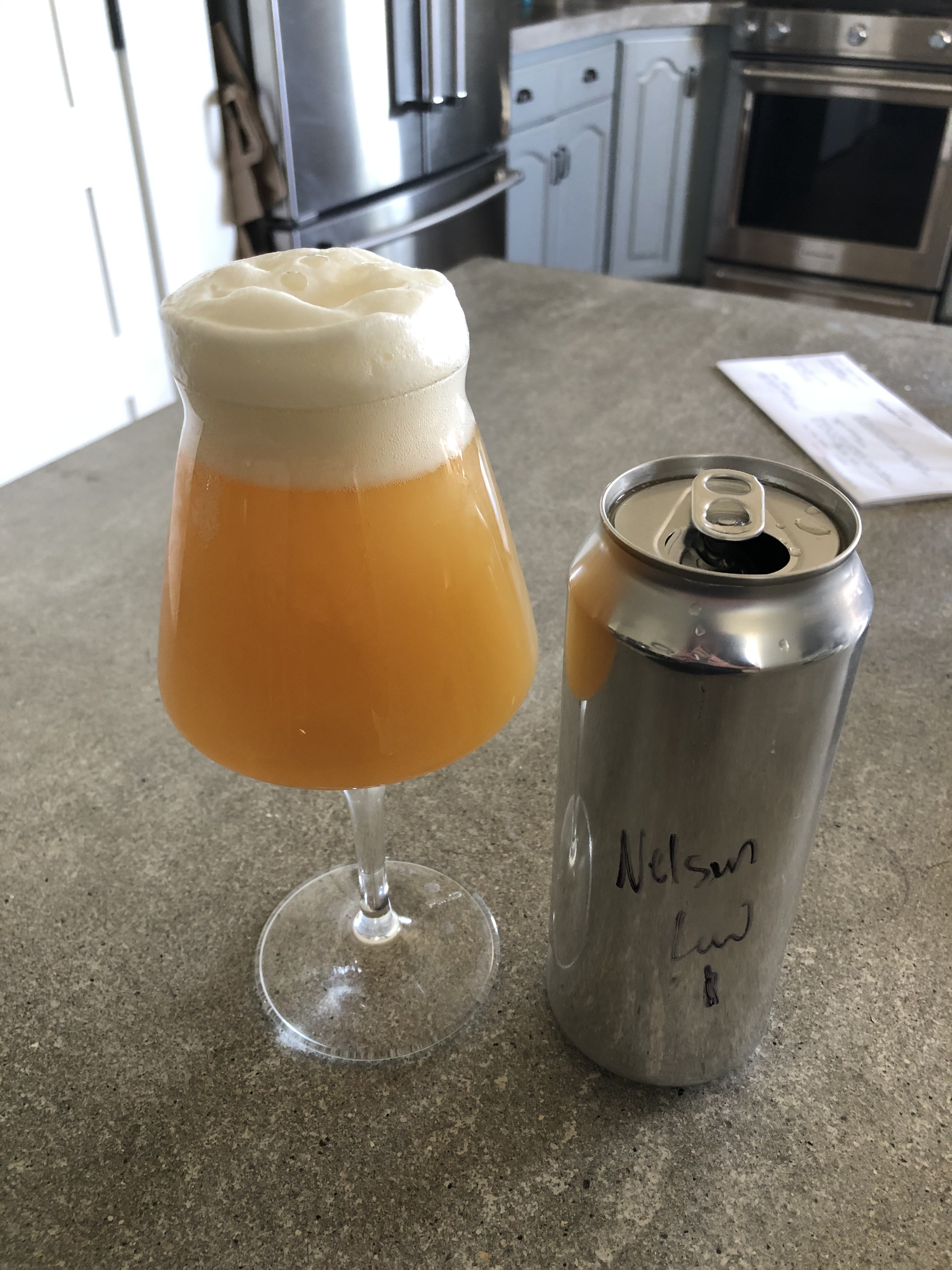I think we first brewed this beer in early 2016 on a 200L kit! We had just managed to get hold of some rare as rocking horse **** Galaxy hops and it was a no brainer to pair it up with Citra in a NEIPA. The aim for the beer was and still is to be pretty full on flavour and aroma wise, not shying away from the aggressive nature of Galaxy. It’s a pretty brash hop, harsh bittering qualities coupled with mega high dry hop polyphenols makes for a very ‘green’ experience early doors. Skilful use of the hop and a bit of patience helps bring the tropical and creamy nature to the fore. In my experience different hop varieties make for differing amounts of haze or ‘murk’ in the finished beer. With sharks we use the top 2 murk producing varieties out there! Expect an opaque light yellow creamy/yoghurt affair that has a soft smooth body leading to an assertive finish. Aromas should leap out, flavours should fully saturate and if brewed well it should have a lovely fluffy white head on it that lasts.
With regards to a suitable water profile for ESNW I would encourage home brewers to experiment. Get a good accurate water report for your area specifically focussing on ppm’s for Calcium, Chloride, Magnesium, Sodium, Sulphate and Bicarbonate. Down in Cornwall we have predominantly soft water ranging from ‘moderately soft’ to ‘very soft’. This basically means ppm’s for all the cations and anions are very low, it also means we have a great base line water source for building style profiles. I know some brewers who utilise reverse osmosis techniques to almost entirely demineralise their water, but I like the fact that all we do is run it through a sediment filter and then a carbon filter. This removes any rust or debris from old mains water pipes and also the volatile low level chlorine used to kill bacteria. Working with the water in your area, in my opinion, is one of the most exciting parts of brewing that’s similar to the concept of ‘terroir’ in farming. With sharks we push Chloride up to around 230ppm, we leave Sulphate at base mains level (10ppm), we elevate Sodium to around 50ppm. The Sodium Chloride is added to the boil and the Calcium Chloride to the mash. By doing this we create a very soft mouthfeel but without elevating Calcium levels above 100ppm. You don’t need to try and emulate this profile though, in fact I would suggest not too if your base line is too far off initially. It’s far more important to work with what you’ve got and tweak from there.
Other tips for success with a NEIPA would be to monitor you PH’s. Mash should be 5.2-5.3 at 20 degrees C. Pre-boil 5-5.1, post boil 4.9-5.05, sparge 5.5-6, post ferment 4.3, post dry hop 4.5-4.8. Oxygen will ruin your beer faster than anything else. Trying to mitigate this at home-brew level is going to be tricky. I would suggest closed transfer under pressure to separate purged vessel for dry hopping, force carbonating and not bottle conditioning. Do not hunt for biotransformation, wait for the ferment to finish, make sure it passes a forced diacetyl test, soft crash to 15 and then dry hop. You will avoid hop creep this way. Hop creep is something we don’t like at Verdant, it makes for an over attenuated beer that that has far more diacetyl to clear up.
Regarding our yeast, pitch at 18 and let rise to 19 and hold. Free rise to 22 for D rest once gravity is at about 1.030. The dry yeast version rages! Expect a massive krausen and potentially higher than anticipated attenuation on generation 1.
Recipe (ballpark amounts based of generic 19L packaged batch)
OG = 1.065
FG = 1.015
ABV = 6.5%
IBU = 27
EBC = 7.3
3.3kg Crisp Extra Pale
0.8kg Simpsons Golden promise
0.45kg Flaked Oats
0.45kg Weyermann Carapils (Simpsons Dextrin works well also)
0.22kg Crisp Wheat Malt
0.22kg Flaked Wheat
Single step 45min mash @ 67 deg C
3g Magnum (12% AA) @ First Wort Hops
60 min boil
Yeast-Vit @ 15minutes
80degree 30 min whirlpool/hopstand = 30g Galaxy & 60g Citra
Pitch one 11g packet of Verdant IPA yeast
Post ferment dry hop = 120g Galaxy T90’s & 180g Citra T90’s (16gpl dry hop)
Dry hop rouse and crash to zero. Keep hop contact time to less than 72 hours if possible.
Even though we’ve given you this the competition though is not to brew the best clone of Even Sharks Need Water, just to be clear.






















![Craft A Brew - Safale S-04 Dry Yeast - Fermentis - English Ale Dry Yeast - For English and American Ales and Hard Apple Ciders - Ingredients for Home Brewing - Beer Making Supplies - [1 Pack]](https://m.media-amazon.com/images/I/41fVGNh6JfL._SL500_.jpg)








































